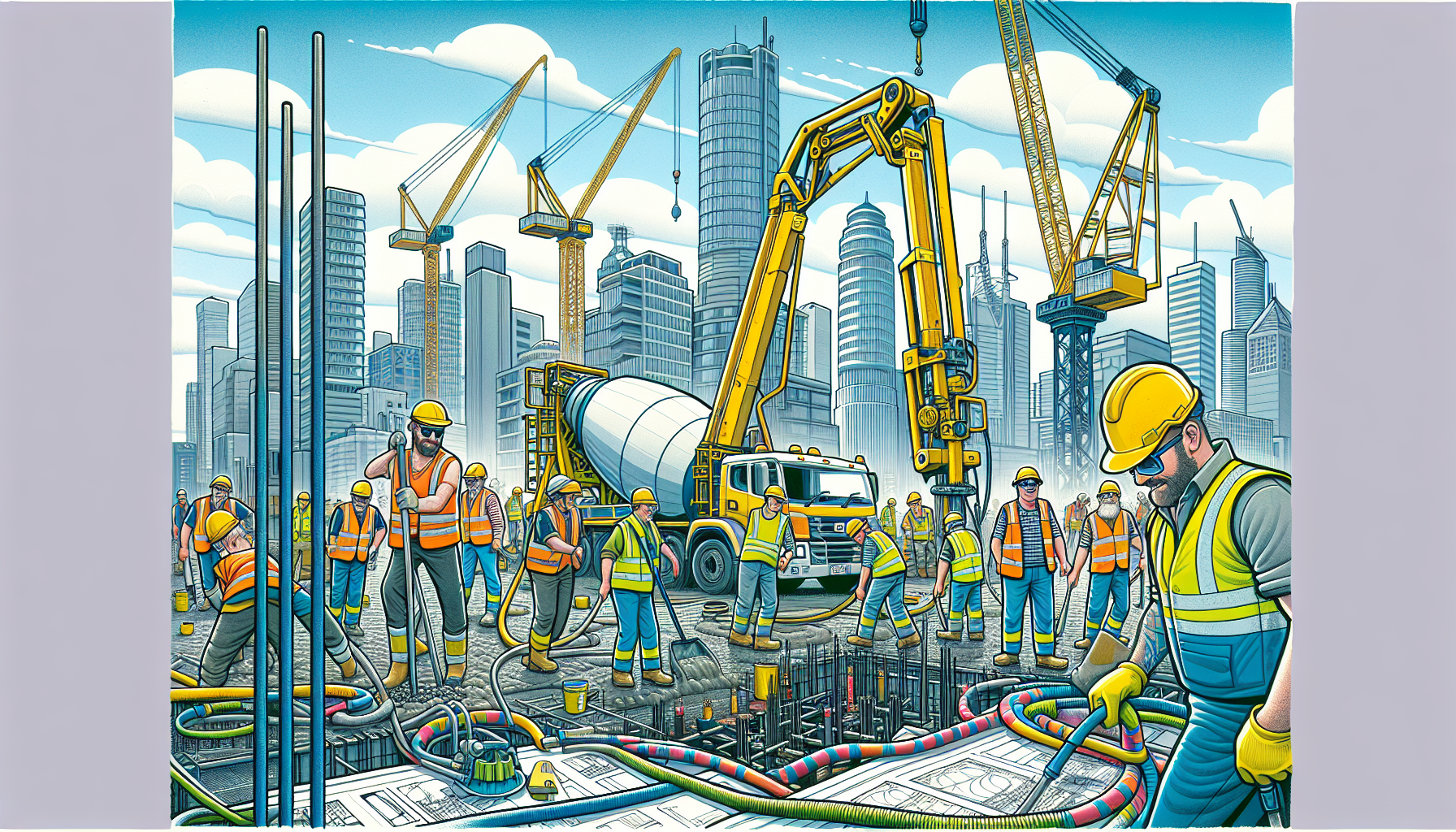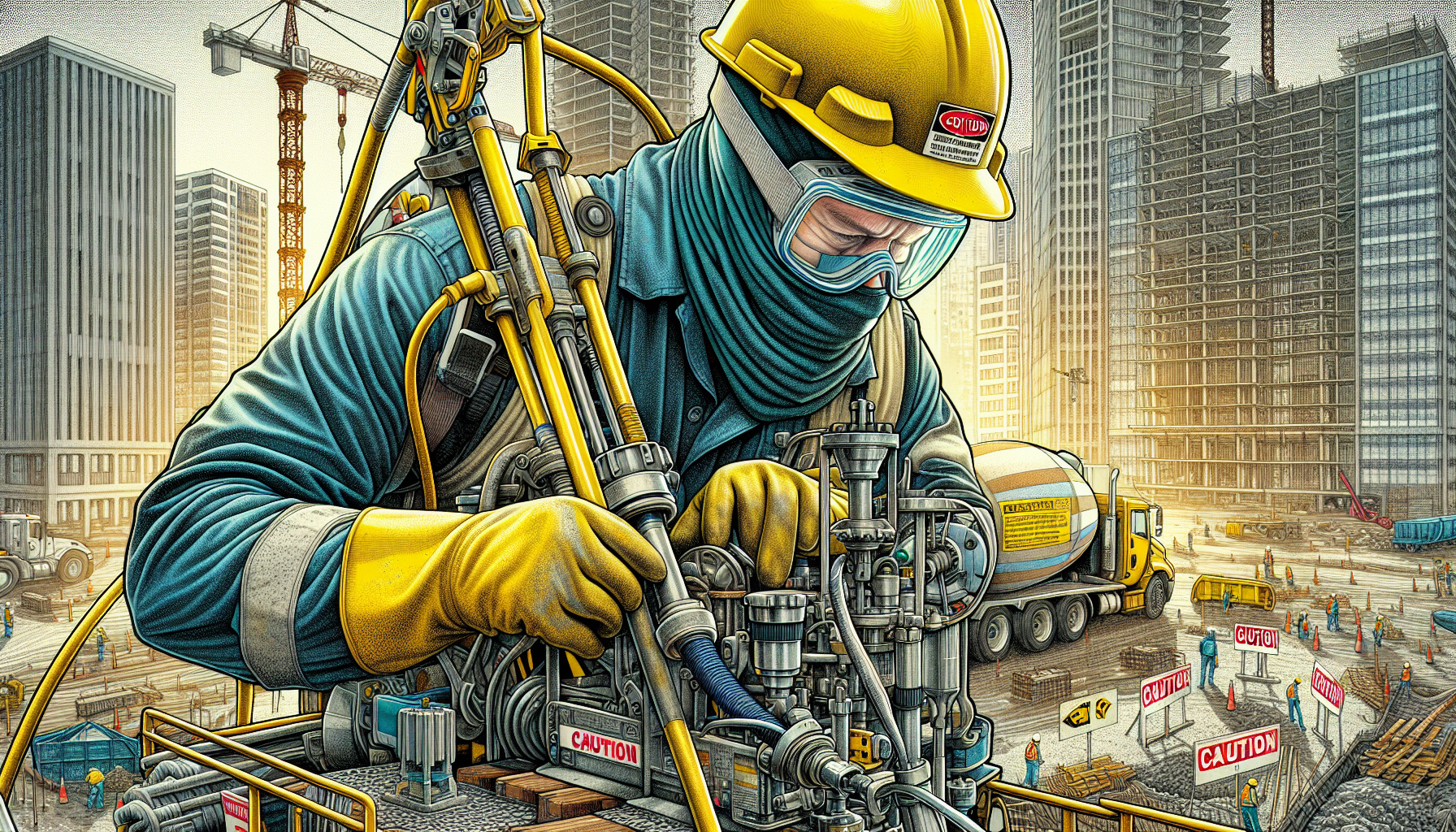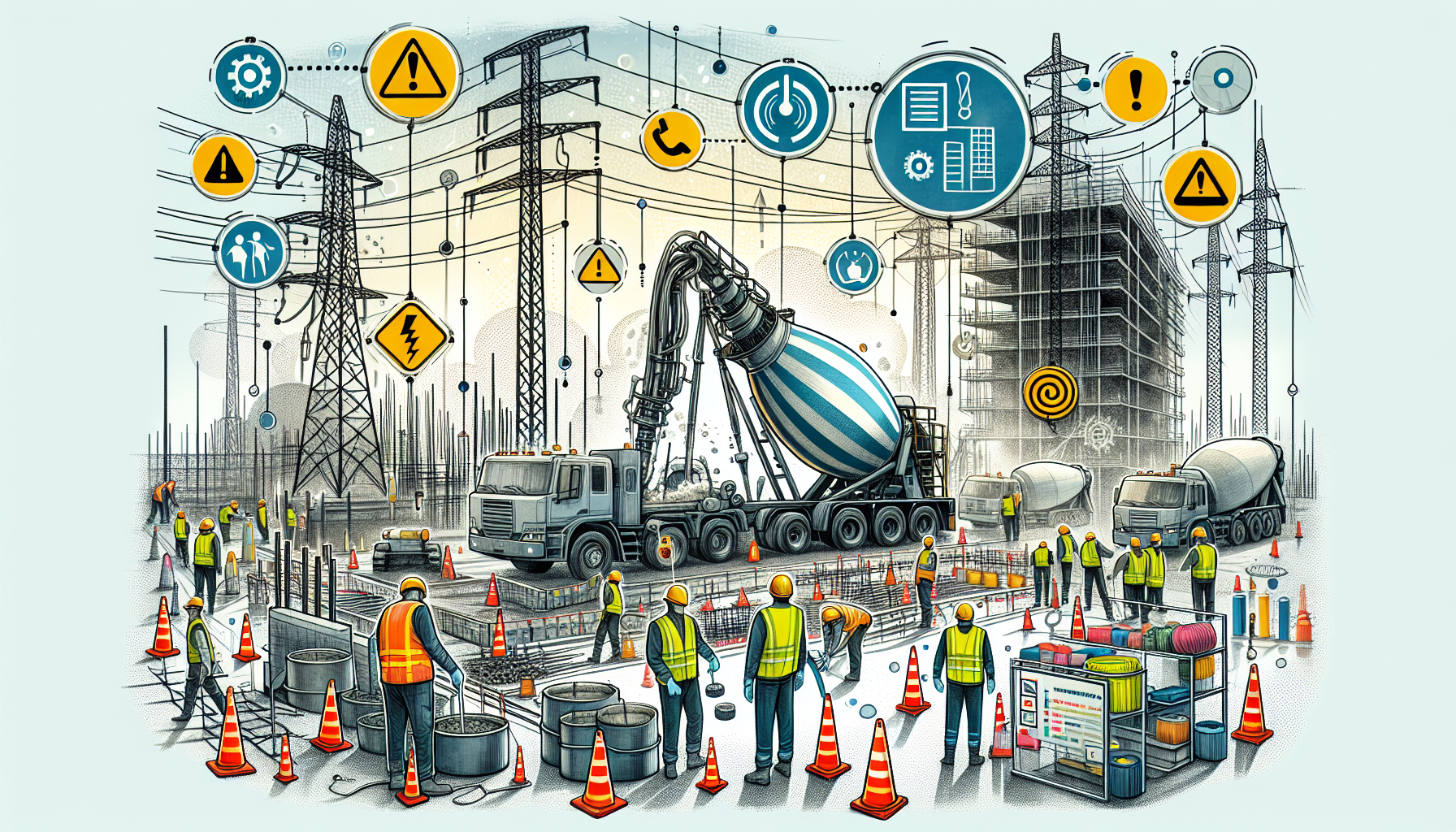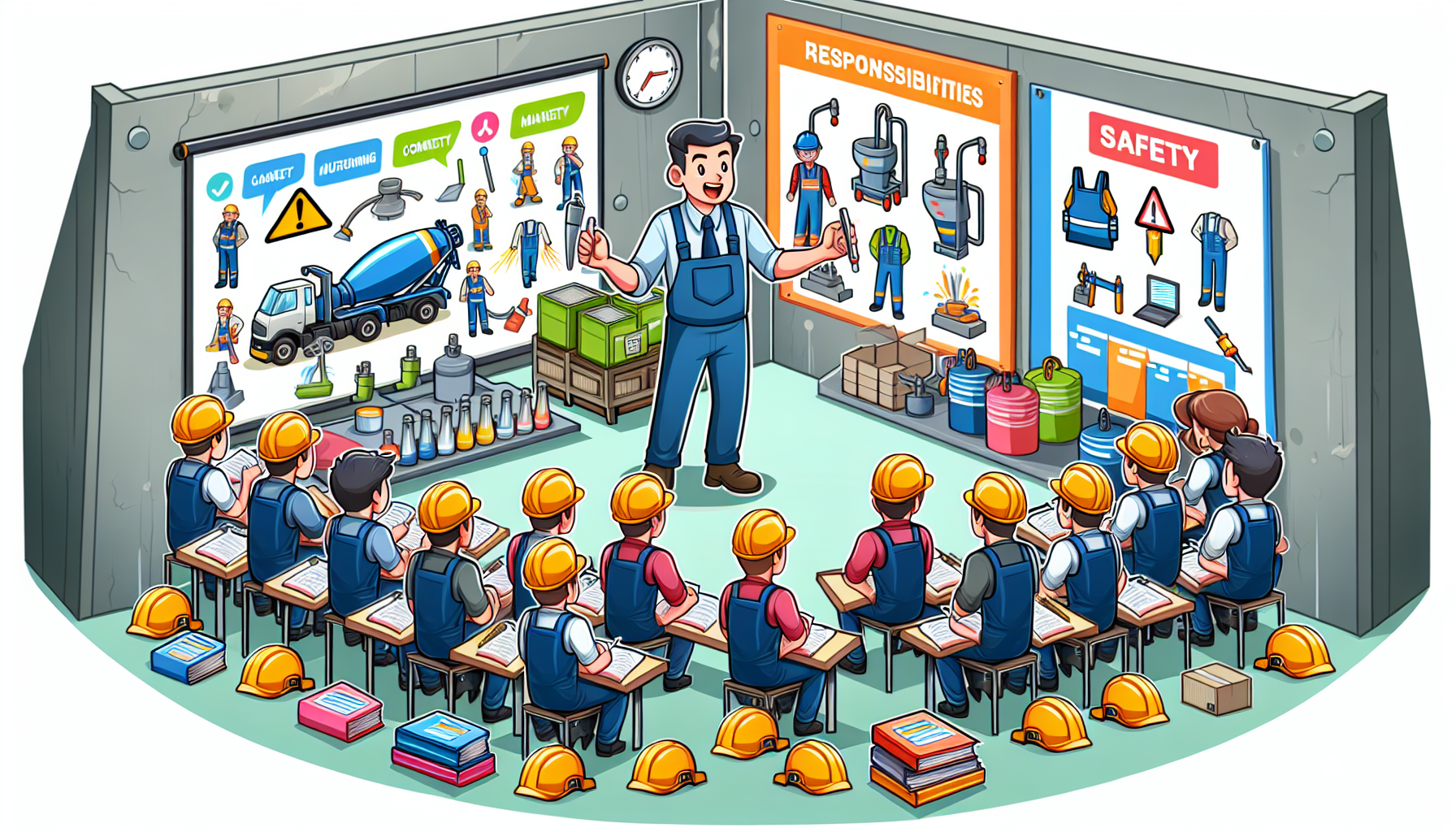-
- Oct 20
-
melbourneconcretepumping

- 0
Concrete Pumping Code of Practice Victoria
Concrete Pumping Code of Practice Victoria:
Essential Safety Guidelines
The Concrete Pumping Code of Practice Victoria is essential for ensuring safe and effective operations in the concrete pumping industry. This article delves into the key safety guidelines and regulatory requirements you need to follow. Learn how to manage risks, protect workers, and comply with the latest standards.
Key Takeaways
- The Concrete Pumping Code of Practice in Victoria provides essential guidelines for managing risks and ensuring safe operations in concrete pumping activities.
- Key safety requirements include the use of Personal Protective Equipment (PPE), effective site preparation, and adherence to operator training and procedures.
- Regular inspection and maintenance of concrete pumping equipment are crucial for preventing accidents and ensuring compliance with safety regulations.
Overview of Concrete Pumping Code of Practice in Victoria

The Concrete Pumping Code of Practice in Victoria serves as a critical resource for those involved in concrete pumping operations. Its primary purpose is to provide practical information on managing risks, thereby ensuring safe and efficient concrete pumping activities. This guide offers a comprehensive framework that addresses various facets of concrete pumping, from equipment setup to the execution of complex tasks.
Concrete pumping operations involve several high-risk activities, and the Code of Practice outlines essential guidelines to safeguard workers and the public. Following these guidelines helps minimize potential hazards and enhance overall safety on construction sites.
The Code covers a wide range of topics, including personal protective equipment (PPE), site preparation, operating procedures, and inspection protocols, all aimed at promoting best practices in the industry standard.
Key Safety Requirements

Incidents involving concrete pumps can result in severe injuries, underscoring the need for comprehensive safety guidelines. The health and safety risks associated with concrete pumping are significant, including equipment failures and hazards from handling wet concrete. These risks necessitate stringent adherence to safety protocols to protect workers and ensure smooth operations.
Adherence to health and safety regulations is necessary to mitigate serious risks in concrete pumping operations. This includes implementing control measures, using appropriate PPE, and ensuring that all personnel are adequately trained. The hazards in concrete pumping underscore the need for diligent adherence to safety requirements.
Understanding and complying with these key safety requirements is crucial for maintaining a safe working environment. By addressing the various health and safety hazards associated with concrete pumping, stakeholders can significantly reduce the likelihood of accidents and injuries on site.
Personal Protective Equipment (PPE)
Personal Protective Equipment (PPE) plays a crucial role in minimizing risks in concrete pumping. The nature of concrete pumping operations exposes workers to numerous hazards, such as wet concrete, noise, and manual handling dangers. Proper PPE can significantly reduce these risks and ensure the safety of all personnel involved.
Workers should be equipped with specific PPE items to protect against various hazards. These include gloves, safety goggles, and waterproof footwear, which are crucial for preventing skin contact with wet concrete and related injuries. Additionally, high-visibility clothing is necessary to enhance workers’ visibility on site, further contributing to a safer working environment.
Moreover, safety helmets are mandatory to protect workers from potential head injuries due to falling objects. Hearing protection is also advised in areas with high noise levels, such as near concrete pumps and mixers. Equipping all workers with the necessary PPE significantly enhances occupational health and safety standards on construction sites.
Site Preparation and Control Measures
Effective planning and preparation are crucial for safe concrete pumping operations. Proper site preparation involves assessing surrounding hazards and securing the pump setup to ensure a safe working environment. A systematic approach to identifying hazards is essential for comprehensive risk assessment and effective hazard management.
Control measures are vital for effective site preparation. This includes creating exclusion zones to prevent unauthorized access and minimize risks. Specific safety protocols must be followed, especially when working near overhead powerlines, to prevent electrocution and other serious injuries.
Adhering to these site preparation and control measures ensures that the construction site is adequately prepared for concrete pumping activities. Proactively addressing hazards and implementing robust safety protocols significantly reduces the likelihood of accidents and injuries.
Operating Procedures
Concrete pumps must be operated by trained personnel who follow specific procedures to ensure safety. This includes adhering to industry standards and best practices to mitigate risks associated with concrete pumping operations. Proper training and adherence to established operating procedures are critical for maintaining a safe working environment with a concrete pump.
Operators of concrete placing equipment are required to hold a high-risk work license and follow specific guidelines to safely operate the machinery. Ensuring that all personnel are adequately trained and qualified to perform their tasks is essential for preventing accidents and ensuring the safe operation of concrete pumps.
Inspection and Maintenance Protocols
Regular inspection and maintenance of concrete pumping equipment are essential for ensuring safe and effective operation. These practices help prevent equipment failures and reduce the risk of accidents on site. Regular inspections help stakeholders identify potential issues early and take corrective actions to maintain safety standards.
Scheduled inspections and maintenance prevent operational failures and ensure compliance with safety regulations. Regular maintenance not only extends the lifespan of the equipment but also enhances its performance and reliability, contributing to a safer working environment.
Scheduled Inspections
Major inspections of concrete pumping equipment are required to occur every six years after the purchase date of the pump. The frequency of these inspections may be adjusted based on the volume of concrete pumped by the equipment and other factors. These inspections are essential for ensuring the safe operation and compliance of concrete pumps.
Inspection reports must be documented and readily accessible to ensure compliance with safety regulations. These reports serve as essential documents that verify the condition and safety of the equipment, aiding in maintaining compliance with safety standards.
Maintenance Records
Keeping comprehensive maintenance records is crucial for tracking the history of repairs and inspections, aiding in future maintenance decisions. Pump owners must maintain records of equipment maintenance and inspections to comply with safety regulations.
Annual inspections must be performed by a certified inspector, and maintaining logbooks is integral to assessing the condition of the equipment. Periodic inspections should be conducted based on usage hours and equipment age, with specific intervals determined by the manufacturer’s guidelines.
Managing Risks and Hazards

Concrete pumping operations pose serious health and safety risks that must be identified and assessed early in project development. By proactively identifying potential hazards, stakeholders can implement effective control measures to mitigate these risks.
Various stakeholders involved in concrete pumping must actively manage the risks associated with the operation and ensure compliance with safety protocols. This collaborative approach is essential for maintaining compliance with safety standards and promoting a safe working environment.
The Concrete Pumping Code of Practice aims to ensure safe operations by addressing risks associated with concrete placing booms. By following the guidelines outlined in the Code, stakeholders can significantly reduce the incidence of accidents and enhance overall safety in concrete pumping activities.
Overhead Powerlines
The code mandates the establishment of ‘no-go zones’ around overhead powerlines to prevent accidents during operations. Correct placement and setup of concrete pumping equipment are vital for safe operations, especially near public areas and powerlines.
Employers are required to prepare a safe work method statement whenever concrete pumping is conducted near potential hazards, including overhead powerlines. A downloadable guide on managing risks associated with concrete pumping is available, offering practical safety management advice.
Hazard Management
A structured approach to hazard management involves recognizing potential dangers and implementing effective control measures. Identifying hazards ahead of time is essential for implementing effective control measures in concrete pumping activities.
Proper site preparation requires identifying hazards and implementing control measures before starting concrete pumping. Implementing exclusion zones is crucial to minimize risks of worker injuries during concrete pumping operations. Safety measures must be revisited whenever changes in work processes or new hazard information arise.
Responsibilities and Training

Concrete pumping operations pose significant health and safety challenges that require careful evaluation and management. Stakeholders in concrete pumping must clearly understand their roles to ensure compliance with safety regulations.
By actively engaging in fulfilling their responsibilities and providing adequate training, stakeholders can significantly mitigate the risks associated with concrete pumping. This collaborative approach is essential for maintaining a safe working environment and ensuring compliance with safety standards.
Employer Responsibilities
Employers are required to maintain safe work environments and adhere to regulations regarding high-risk work licenses for boom pump operators. It is essential for employers to verify that workers possess the appropriate high-risk work license for operating concrete placing boom equipment.
Consultation among all parties involved in concrete pumping is crucial for effective planning and site preparation. By fostering open communication and collaboration, employers can ensure that all safety protocols are followed and risks are effectively managed.
Worker Training
Employers are required to provide adequate training and information tailored to the specific risks and tasks workers face. Proper training for workers should encompass the specific hazards associated with concrete pumping equipment and the control measures in place.
Training programs should be tailored to the nature of the work and the risks present at the job site. By ensuring that workers are well-informed and trained, employers can significantly reduce the likelihood of accidents and promote a culture of safety on construction sites.
Documentation and Compliance

Maintaining detailed records of maintenance activities is critical for compliance and safety audits. Daily and monthly logbooks serve as documentation that informs annual inspections.
Comprehensive and up-to-date records enable stakeholders to demonstrate compliance with safety regulations and enhance overall safety in concrete pumping operations.
Required Documents
Maintaining comprehensive document, such as inspection reports and training records, is vital for compliance in concrete pumping operations. Inspection reports are crucial documents that must be maintained to ensure the safety and compliance of concrete pumping equipment.
Training records for personnel operating concrete pumps are essential for verifying competence and compliance with safety standards. By keeping these documents organized and readily accessible, stakeholders can effectively manage safety and compliance efforts.
Register of Equipment
It’s essential to keep an updated register of all concrete pumping equipment used on-site to comply with safety regulations. A comprehensive register of all concrete pumping equipment must be maintained to ensure accountability and compliance.
Each entry in the equipment register should include details such as the equipment’s model, serial number, and maintenance history. By maintaining a detailed and accurate register, stakeholders can ensure that all equipment is properly maintained and compliant with safety standards.
Further Advice and Resources
For additional guidance on concrete pumping safety, you can contact relevant regulatory bodies. These organizations can provide valuable insights and support to help you maintain compliance with safety standards.
Downloadable resources and guides related to concrete pumping safety are available for further reference. Utilizing these resources helps stakeholders stay informed about best practices and emerging safety trends in the industry.
Contact Information
This section offers essential contact details for regulatory bodies and organizations involved in concrete pumping safety. Regulatory bodies responsible for overseeing concrete pumping safety include WorkSafe Victoria and relevant local councils.
Readers are encouraged to contact these organizations directly for any specific questions or assistance related to concrete pumping operations. Resources for further guidance can be accessed through the WorkSafe Victoria website and other safety organizations’ portals.
Downloadable Resources
Safe Work Australia offers downloadable guides related to work health and safety that can assist in understanding safety measures in concrete pumping. These resources are crucial for ensuring compliance with safety guidelines in concrete pumping.
Summary
In summary, adhering to the Concrete Pumping Code of Practice in Victoria is essential for ensuring the safety and efficiency of concrete pumping operations. By understanding and implementing key safety requirements, managing risks, and maintaining comprehensive documentation, stakeholders can significantly reduce the likelihood of accidents and enhance overall safety.
Let this guide inspire you to prioritize safety in all your concrete pumping activities. By fostering a culture of safety and compliance, we can collectively create safer construction environments and protect the well-being of all workers involved.
Frequently Asked Questions
What is the primary purpose of the Concrete Pumping Code of Practice in Victoria?
The Concrete Pumping Code of Practice in Victoria aims to offer practical guidance for effectively managing risks, thereby ensuring safe and efficient concrete pumping operations.
What PPE is essential for concrete pumping operations?
Essential PPE for concrete pumping operations includes gloves, safety goggles, waterproof footwear, high-visibility clothing, safety helmets, and hearing protection to ensure worker safety.
How often should major inspections of concrete pumping equipment occur?
Major inspections of concrete pumping equipment should occur every six years after purchase to ensure optimal performance and safety. Regular maintenance is essential for the longevity and reliability of the equipment.
What are the responsibilities of employers in concrete pumping operations?
Employers are responsible for maintaining safe work environments, verifying worker qualifications, and ensuring effective planning and site preparation through collaboration with all involved parties. These measures are essential to promote safety and operational efficiency in concrete pumping operations.
Where can I find downloadable resources related to concrete pumping safety?
You can find downloadable resources related to concrete pumping safety on the websites of Safe Work Australia and the Concrete Pumping Association of Australia (CPAA). These organizations provide valuable materials to enhance safety practices.
melbourneconcretepumping